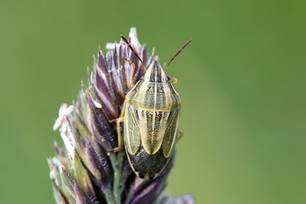What wildlife do
they support?
Colliery spoil sites are often regarded as “unsightly” and "dangerous" areas of land that are "devoid of life". This couldn't be further from the truth! They are in fact places of incredible beauty which harbour complex ecosystems for many rare and threatened species. After decades of weathering, the black bare spoil has gradually developed thin soils and slowly these sites have became vegetated. Today, they support diverse and intricate mosaics of heathland, flower-rich grassland, species-rich lichen and moss communities, scrub, woodland and wetlands.
The diverse micro-habitats support a wealth of rare and unusual fungi, with diverse Waxcap, Coral and Earth-tongue communities. The warm, sunny tip faces support excellent reptile habitat where Common Lizard and Slow-worm are abundant, and where mining bees can nest. Although not as common, some of the best sites for Adder in the South Wales Valleys are on colliery spoil, while Grass snakes are associated with wetlands on these sites. Ponds, ditches, seasonal pools and reedbeds support water birds (whose natural habitats are declining) and offer breeding habitat for frogs, toads, newts and dragonflies. Areas of tall grass and heath support complex networks of mice and vole runs, which in-turn attract hunting Buzzard, Kestrel, Red Kite and Barn Owl. Flower-rich grasslands and heathlands provide abundant forage for pollinating insects, supporting at least 28 butterfly species and over 100 species of bees, as well as many other insects.
The images below showcase just some of the habitats and wildlife found on colliery spoil sites in the South Wales Valleys. All images are the copyright of Liam Olds.





















Why are they havens for wildlife?
The are several key features that make colliery spoil tips, and their associated collieries, fantastic places for wildlife. The first of these is their varied nature - they are highly diverse landscapes with varied topography, aspect, substrate composition, hydrology and pH. These diverse factors act to create complex habitat mosaics in close proximity. This means that a single colliery spoil site can simultaneously support a wide variety of habitats. The greater the number of habitats there are available, the more niches there are to support a greater number of wildlife species; this explains the diverse assemblages of species found on these sites.
Another contributory factor is their thin, nutrient-poor soils. This creates stressed ground conditions that prevents more dominant plant species (such as bramble, bracken and coarse grasses) from taking over, slowing succession and ultimately leading to the formation of largely open, sunny habitats. These conditions encourage flower-rich grasslands that support a strong assemblage of nectar-rich, stress-tolerant annual plants. These wildflowers provide abundant forage for numerous pollinating insects such as butterflies, moths, hoverflies, bees, wasps and beetles. Given growing evidence of a serious decline in pollinating insects nationally, it is clear how important colliery spoil sites are to the conservation of these insects.
Finally, these sites are relatively undisturbed locations which are generally free from human intervention. Here, nature can thrive in an absence of chemical use and unfavourable management techniques.
.png)

























